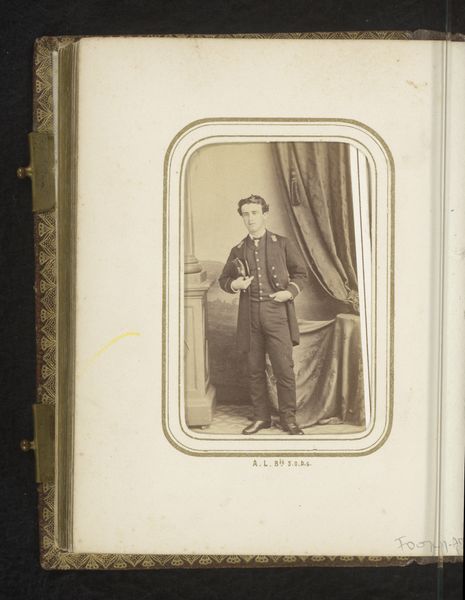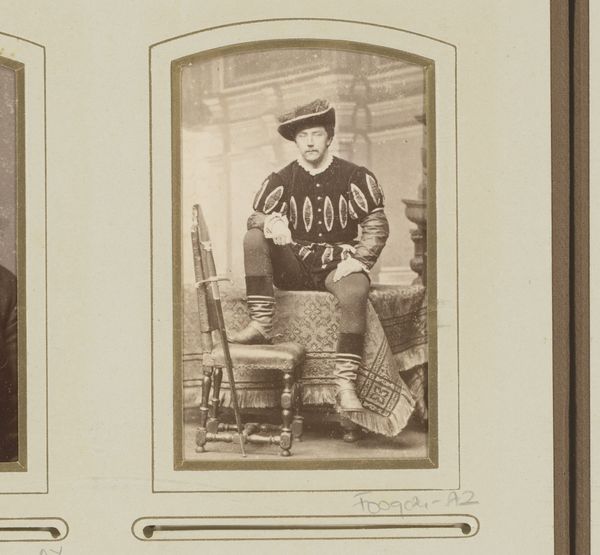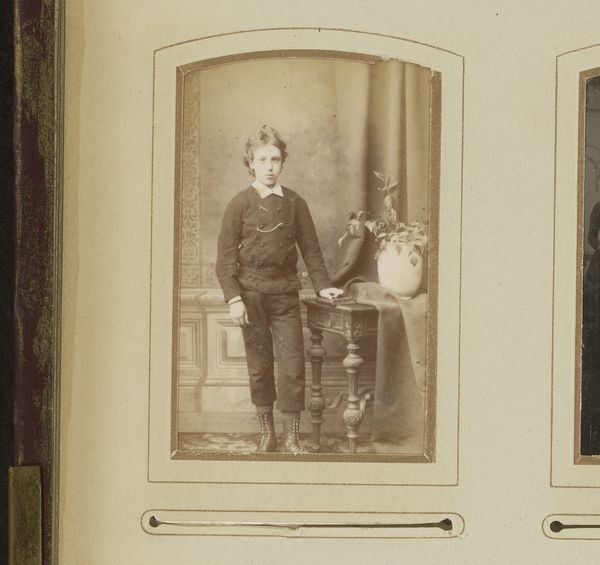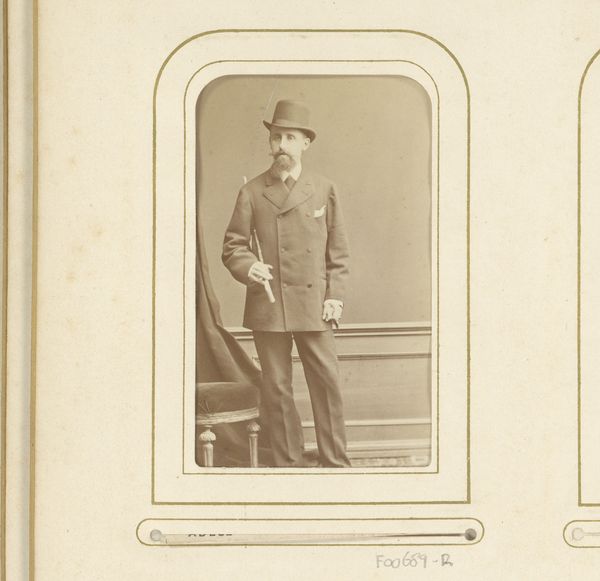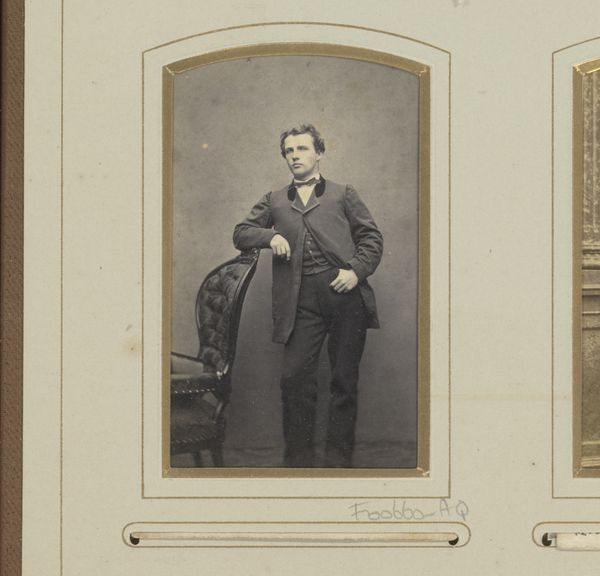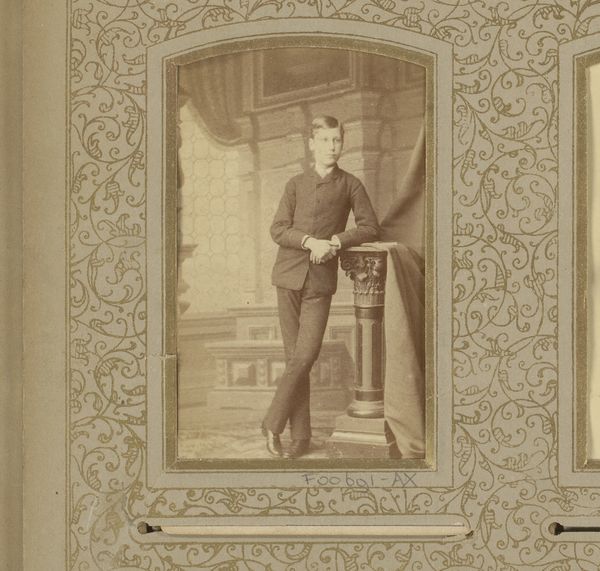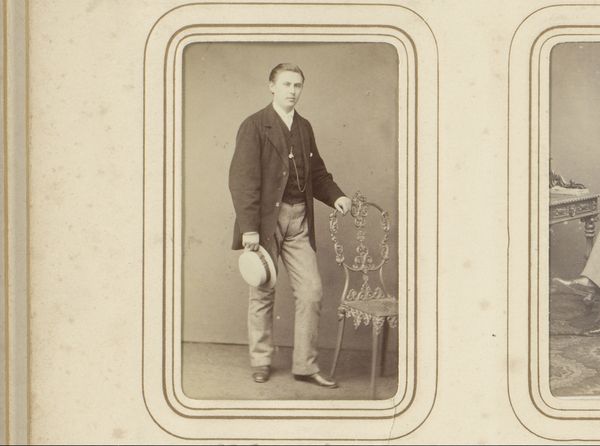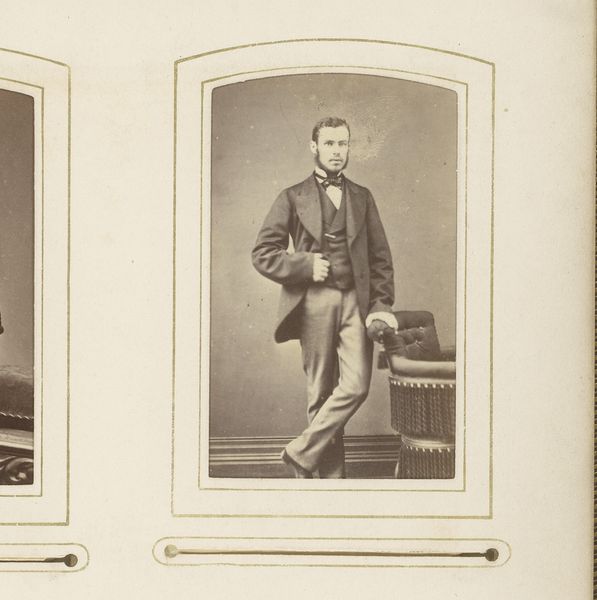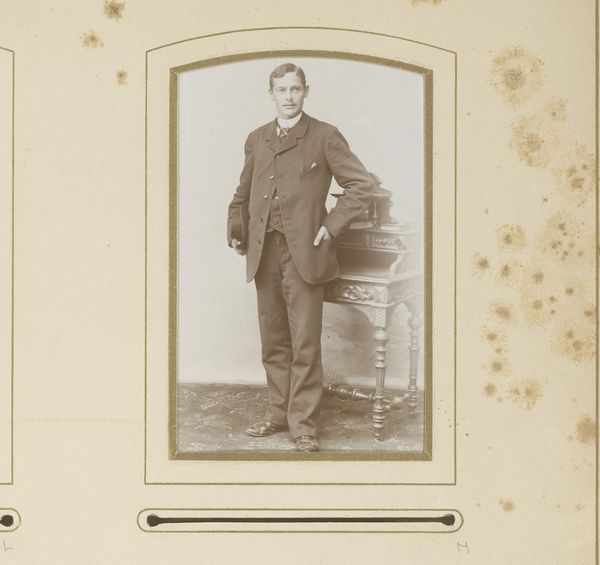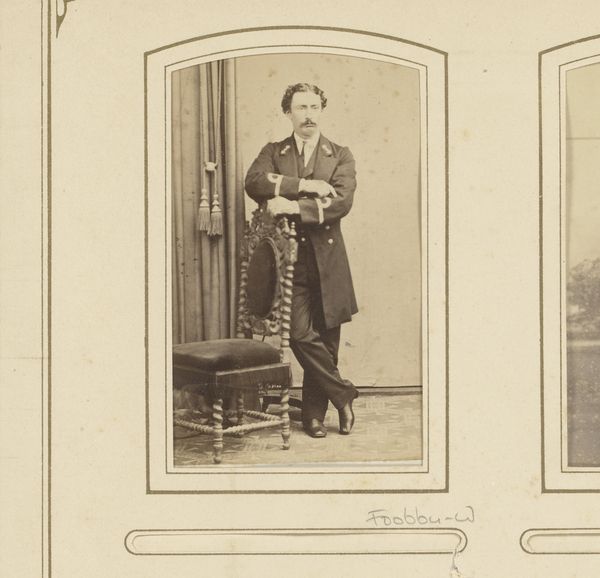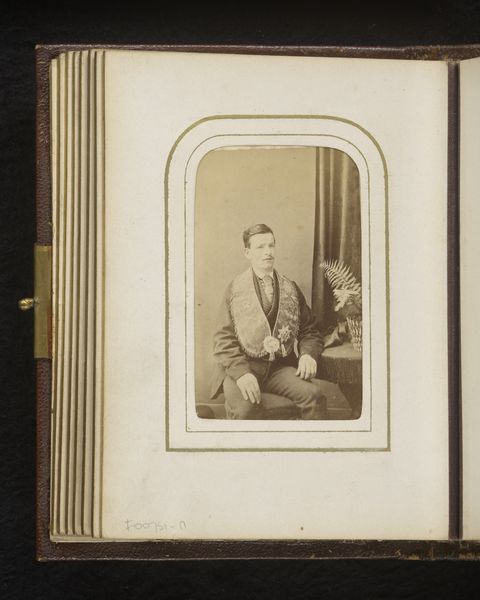
daguerreotype, photography
#
portrait
#
daguerreotype
#
photography
#
historical photography
#
19th century
#
genre-painting
Dimensions: height 84 mm, width 51 mm
Copyright: Rijks Museum: Open Domain
Curator: Looking at this remarkable daguerreotype, circa 1855 to 1870, by Delehaye & Sluyts entitled “Portret van een jonge man met cap, zweep, vlinderdas en sjerp”, what initially strikes you? Editor: The young man appears somewhat rigidly posed, almost theatrical. There's a stark formality in the arrangement of his attire and accoutrements. I’m interested in how those visual elements contribute to the overall effect. Curator: Indeed. Let’s consider the materials themselves. The daguerreotype, an early photographic process on a silvered copper plate, lends this image a distinct reflective quality. It captures the subject with remarkable clarity, particularly the texture of his clothing and the almost dream-like, muted tonality. Editor: And how might the materials of his clothing contribute to a reading of his social status? Notice the high collar and meticulously tied cravat. Also note the bowler hat—a seemingly casual item placed incongruously within a more formal setting. What sort of labor allows this presentation? Curator: From a formal perspective, observe how the diagonal sweep of his sash cuts across the vertical linearity of the backdrop and his posture. It creates a visual tension. Moreover, the symmetry in the image and how he balances in space offer additional insight. Editor: I’m wondering about that backdrop itself. It presents this idealised space behind him but that constructed world exists due to the labor of many individuals, most of whom won’t experience such treatment. He wields his riding crop confidently. We can read into that an expression of privilege afforded by a network of laboring individuals. Curator: Absolutely. And we mustn’t ignore the significance of the hat. It perhaps symbolizes a move towards industrialisation, yet is juxtaposed with an almost romantic presentation. It's almost as if these pieces are speaking back and forth with one another, arguing their meaning with placement. Editor: Right! And that hat, presented through the daguerreotype, suggests how quickly this new technology sought to embed itself within established social codes, offering the emergent middle class a potent new medium for self-representation. In some sense, a medium in conflict with its message, the materiality of it against the immaterial aspirations within the frame. Curator: Considering the intricate arrangement of details and formal decisions, there's so much for an eager art historian to consider about representation. Editor: For me, I want to know how each piece in that photograph reflects or rejects systems of labour as this technology became integrated in nineteenth-century Belgium. It suggests just how vital material considerations are for comprehending visual languages and social relations.
Comments
No comments
Be the first to comment and join the conversation on the ultimate creative platform.
